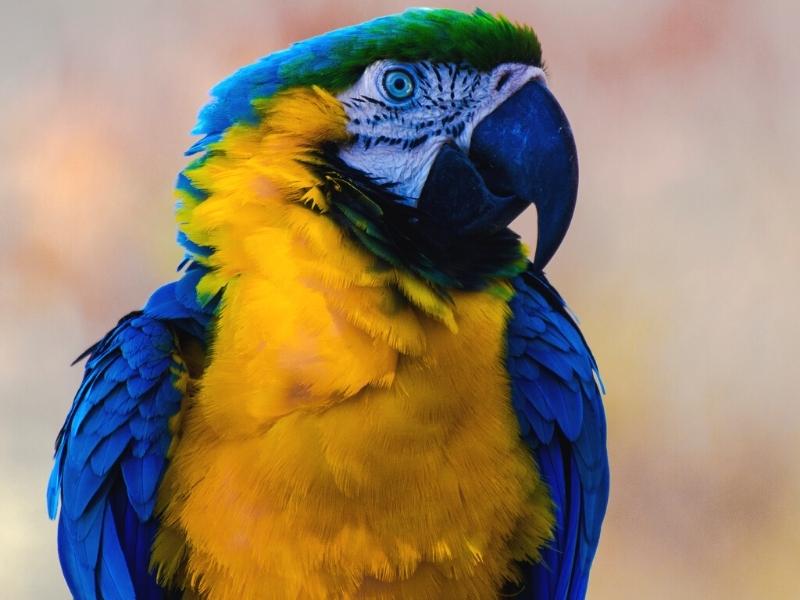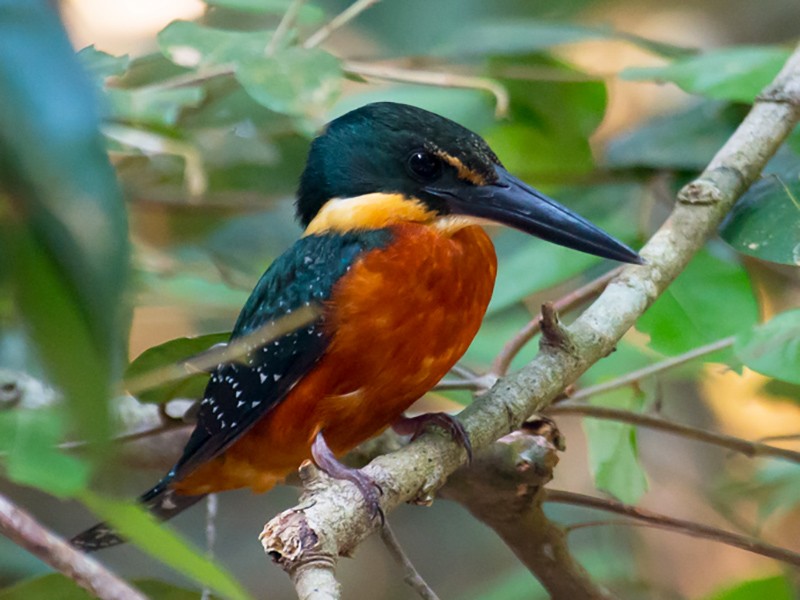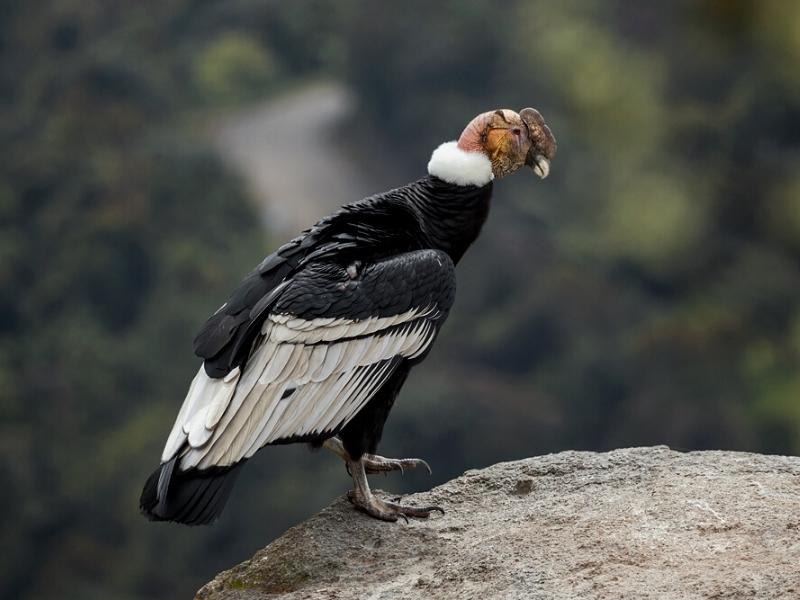Manu National Park Tours, Manu Jungle Trip, Manu Jungle Tours,
OPENING TIMES: Mon. – Fri. 9 am until 5 pm | +51 916 868 685 – +51 923 550 012 | info@amazonnatureperu.com
OPENING TIMES: Mon. – Fri. 9 am until 5 pm | +51 916 868 685 – +51 923 550 012 | info@amazonnatureperu.com
- Homepage
- /
- Manu Birding & Photography Tours – 13 Days / 12 Nights
Manu Birding & Photography Tours – 13 Days / 12 Nights
- Price: USD$ 6800.00 per person (minimum 2 participants).
- Location: Manu National Park - Reserved Zone - Tambo Blanquillo
- Frenquency: Departures 6 days a week.
- Physical Difficulty: Moderate to challenging (levels 1 to 5).
Embark on the ultimate 13-day, 12-night Birding & Photography Experience in Manu National Park, a journey designed to maximize your encounters with the incredible avian diversity of Peru. This extensive tour covers a vast altitudinal range, from the high Andes to the deep Amazonian lowlands, including the renowned Restricted Zone. You’ll visit prime birding hotspots, specialized photography hides, and pristine ecosystems, offering unparalleled opportunities to observe and photograph a remarkable array of species, from majestic Andean Condors to vibrant macaws and elusive jungle inhabitants. This is an unparalleled immersion for serious birders and photographers seeking an in-depth exploration of Manu’s natural wonders.
Itinerary:
Day 1: Cusco – Chonta Canyon – Limatambo
We depart early from Cusco towards the Chonta Canyon, famous for being one of the best places to observe the majestic Andean Condor (Vultur gryphus) in flight. We'll also be able to observe high Andean birds such as the Andean Flicker (Colaptes rupicola), Rusty-fronted Canastero (Asthenes dorbignyi), and the Variable Hawk (Geranoaetus polyosoma). Afterward, we continue to Limatambo, where we'll spend the night surrounded by nature. Overnight in Limatambo.,Day 2: Wayqecha Biological Station
Today, we fully immerse ourselves in the richness of the high montane forest. Very early, we set out to explore the trails around the biological station, surrounded by a misty environment of mosses and trees covered in epiphytes. Here, the priority is to search for and photograph specialized species in this unique Andean habitat. With patience, we search for the elusive Red-and-White Antpitta, which usually sings at dawn. We walk along well-maintained trails, where the Grey-breasted Mountain Toucan, Collared Jay, and Mountain Cacique may also appear. Forest edges are excellent for spotting Andean Guan, Marcapata Spinetail (endemic), Crimson-mantled Woodpecker, and White-throated Tyrannulet. The diversity of hummingbirds is also notable, with species such as Chestnut-breasted Coronet, Amethyst-throated Sunangel, Purple-backed Thornbill, and Scaled Metaltail visiting wildflowers and resting areas. During the afternoon, we continue exploring new routes within the station, attentive to mixed flocks and difficult birds like the Ochraceous-breasted Flycatcher, Barred Fruiteater, and White-throated Antpitta. This is one of the best sites to observe understory birds in their natural habitat, away from busy roads. We close the day with an optional sunset walk in search of crepuscular species like the Swallow-tailed Nightjar.,Day 2: Limatambo – Hummingbird Center - Wayqecha Biological Station
We take a scenic route from Limatambo towards San Salvador, where we will visit a hummingbird observation center that hosts species like the Long-tailed Sylph (Lesbia nuna), White-bellied Emerald (Amazilia chionogaster), and the Black-tailed Trainbearer (Sappho sparganura). We then ascend towards the Acjanaco Pass (3,560 m / 11,680 ft), the gateway to Manu National Park. During the journey, we will make strategic stops to observe Andean and transitional birds such as the Violet-throated Metaltail (Metallura baroni), Andean Tit-Spinetail (Leptasthenura andicola), and the Junín Canastero (Asthenes virgata). Upon arrival at Wayqecha, we'll enjoy observation walks in the afternoon. Overnight at Wayqecha Biological Station.,Day 3: Wayqecha Biological Station
Today is a full day of exploring the trails of Wayqecha, searching for species like the Grey-breasted Mountain Toucan (Andigena hypoglauca), Black-faced Antpitta (Grallaria milleri), Orange-throated Tanager (Tangara schrankii), and the Ruby-crowned Kinglet (Regulus calendula). We might also observe the elusive Andean Nighthawk (Caprimulgus longirostris) in the early morning or at dusk. Overnight at Wayqecha Biological Station.,Day 4: Wayqecha – Cloud Forest – Cock of the Rock Lodge
We descend into the cloud forest, an ideal habitat for the Crested Quetzal (Pharomachrus antisianus), Masked Trogon (Trogon personatus), and a wide variety of tanagers such as the Paradise Tanager (Tangara rufiventris). We'll make a special stop at a hummingbird observation point: Marvelous Spatuletail (Loddigesia mirabilis), Orange-throated Sunangel (Boissonneaua matthewsii), and more. Overnight at Cock of the Rock Lodge.,Day 5: Cock of the Rock and Cloud Forest Trails
Very early, we visit the lek of the Andean Cock-of-the-Rock (Rupicola peruvianus). Afterward, we explore cloud forest trails in search of the Rufous-capped Antpitta (Grallaricula peruviana), Inca Wren (Pheugopedius eisenmanni), Emerald Tanager (Tangara florida), and the elusive Horned Guan (Pauxi unicornis). Overnight at Cock of the Rock Lodge.,Day 6: Cock of the Rock – Píkiti – Bonanza Ecological Reserve
We travel by land to Atalaya with stops for observing birds of the cloud forest edge and bamboo habitats like the White-browed Antbird (Myrmelastes leucostictus) and the endemic Manu Spinetail (Synallaxis manuensis). We then navigate the Madre de Dios River to Bonanza. Possible sightings include: Amazon Kingfisher, Rufescent Tiger-Heron, and Scarlet Macaw (Ara macao). Overnight at Bonanza Ecolodge.,Day 7: Bonanza – Mammal Clay Lick
We take specialized walks through the primary forest: searching for the Blue Cotinga (Cotinga nattererii), Scaly-backed Antbird (Myrmeciza squamosa), and House Wren (Cantorchilus leucotis). In the evening, we visit a mammal clay lick, a place frequented by tapirs, peccaries, and other nocturnal mammals. Overnight at the mammal clay lick hide.,Day 8: Bonanza – Observation Tower and Specialized Walks
From the observation tower, we look for canopy birds such as the Toco Toucan (Ramphastos toco), Crested Eagle (Morphnus guianensis), and the Snowy Cotinga (Carpodectes hopkei). We'll also take walks through the understory to see the Black-headed Antbird (Percnostola rufifrons) and mixed flocks. Overnight at Bonanza Ecolodge.,Day 9: Bonanza – Manu River – Casa Matsiguenka (Restricted Zone)
We navigate towards the Restricted Zone of Manu National Park. We observe riparian and aquatic birds such as the Jabiru (Jabiru mycteria), Wood Stork (Mycteria americana), and raptors like the Snail Kite (Rostrhamus sociabilis). Overnight at Casa Matsiguenka.,Day 10: Casa Matsiguenka – Salvador and Otorongo Lakes
We explore oxbow lakes by catamaran: looking for Hoatzins (Opisthocomus hoazin), Agami Heron (Agamia agami), Boat-billed Heron (Cochlearius cochlearius), and Pygmy Kingfisher (Chloroceryle aenea). We'll climb an observation tower with views of the canopy: possible sightings of Royal Flycatcher (Onychorhynchus coronatus) and Harpy Eagle (Harpia harpyja). Overnight at Casa Matsiguenka.,Day 11: Casa Matsiguenka – Blanquillo
We navigate towards Blanquillo. Opportunities to observe the Maguari Stork (Ciconia maguari), Black-crowned Night Heron (Nycticorax nycticorax), King Vulture (Sarcoramphus papa), and various riverside species. Possible stop to observe mixed flocks in riparian gallery forest. Overnight at Blanquillo Lodge.,Day 12: Macaw Clay Lick – Specialized Walks
We visit the world-famous Blanquillo Macaw Clay Lick: observing Blue-and-yellow Macaw (Ara ararauna), Red-and-green Macaw (Ara chloropterus), White-winged Parakeet (Brotogeris versicolurus). In the afternoon, we take walks to observe antbirds, becards, and other understory birds. Overnight at Blanquillo Lodge.,Day 13: Blanquillo – Puerto Maldonado or Cusco
We begin our return by boat towards Boca Colorado and travel by land to Puerto Maldonado or Cusco, depending on your itinerary. This offers final opportunities to observe riverside species and review your birding checklistWhat's Included
- Private Transportation (bus and boat)
- All necessary equipment (chair, Mosquito nets, tables, mattress, rubber boots, rain poncho)
- Professional bilingual local guide (well-equipped with guiding gear)
- Mineral water
- First aid including Antivenomous for snake bites
- 3 meals per day; included vegetarian, vegan, pescatarian options
- Midmorning daily snacks (biscuits, candy, fresh fruit, juice)
- Professional Cook
- Entrance fee to Chonta Canyon (condor viewpoints)
- Entrance to Cock of the Rock (Lek)
- Entrance to Bamboo Lodge
- Entrance to the hot springs
- Entrance to Camouflage House (Mammals Clay Lick)
- Entrance fee to Manu National Park
- Entrance to Macaw Clay Lick
- Entrance to cock of the rock logde
- Entrance to Wayquecha Biological Station
- Entrance to Blanquillo Lodge
- Entrance fee to Manu National Park
- And much more.
What you need to take: VERY IMPORTANT
- Light sleeping bag or light blanket
- Repellent with a minimum of 25% DEET
- Camera with spare batteries for many days
- Binoculars 10X42(you can rent with us)
- Powerful long-range flashlights with extra batteries.
- Waterproof case, bags to protect your electronics and valuables
- Sun lotion,
- Pocket money
- Day pack, water bottle
- Battery charger for your electronic devices
- Sandals
- Extra toilette paper
- General Dark clothing (camouflage to see the wildlife) long sleeves shirts and long pants, , shorts, waterproof jackets Sun hat, small towel, Thick long socks, trekking shoes.
- All your personal hygiene needs
- A bit of money for staff tips
- No included the last dinner
6800
Book your tour
Tour price per person: USD
For reservations of 3 or more people, the price per person is special.
Total: USD
Pay with PayPal




